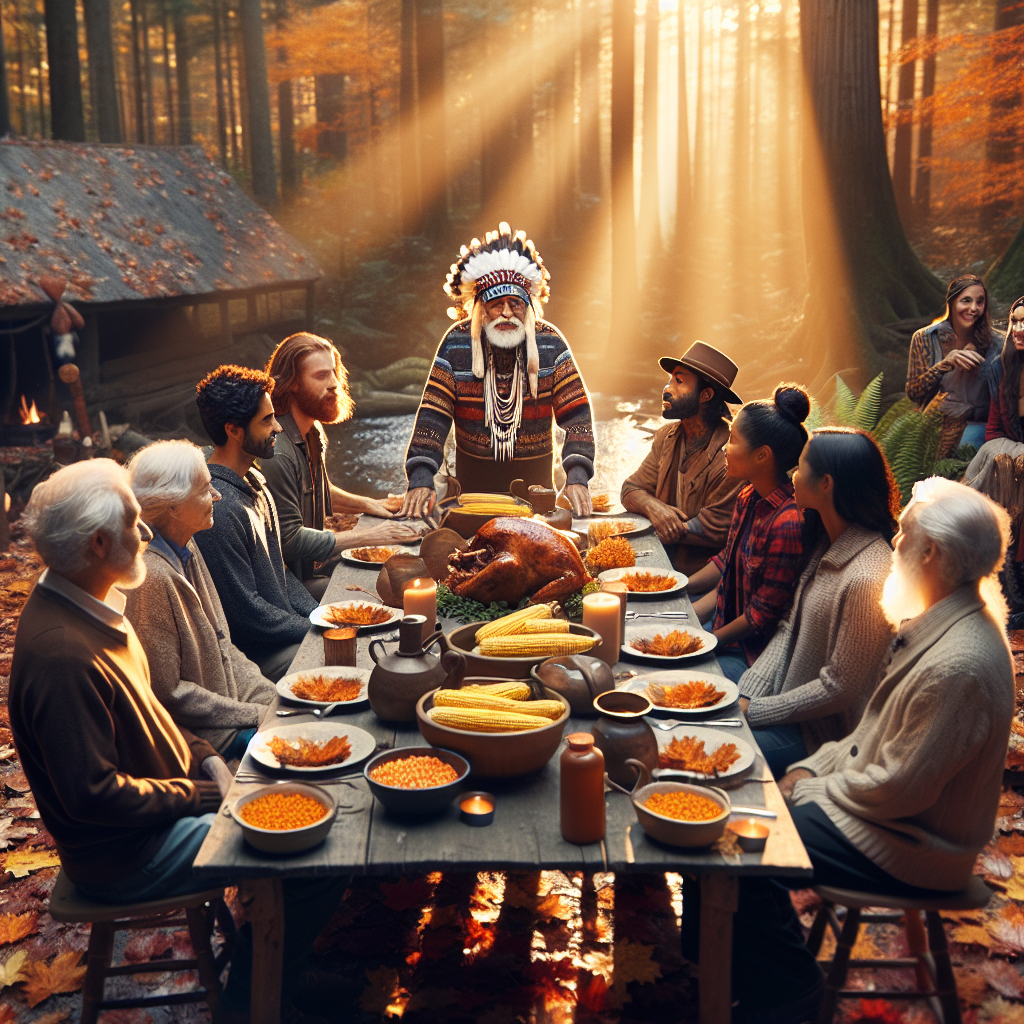
This image was created with AI technology using the Dall-E 3 model. While we strive for accuracy, please note that AI-generated images may not always precisely reflect real-world conditions or appearances.
As October’s crisp winds sweep across Canada, the nation undergoes a reflective pause for Thanksgiving—a celebration steeped in traditions distinct from its American counterpart. Celebrated on the second Monday of October, Canadian Thanksgiving embodies a quieter, more culturally intertwined observance, paying homage to both the harvest and Indigenous roots. In contrast to the commercial vibrancy associated with the American celebration in November, Canadian Thanksgiving presents a nuanced symbiosis of historical acknowledgments and modern gratitude.
The Canadian Thanksgiving traces its origins to English explorer Martin Frobisher, who celebrated the first formal Thanksgiving in the late 1570s after surviving harsh conditions on his journey to find the Northern Passage. Distinctly Canadian, the holiday was historically aligned with the harvest’s conclusion, offering gratitude for a bountiful yield after the growing season. Yet, it also carries the weight of Indigenous celebrations and acknowledgments, forming part of the broader Canadian tapestry that respects and integrates Indigenous customs and traditions long existing before European settlers arrived.
Food plays a crucial role in Thanksgiving celebrations worldwide, and Canada’s feast is no exception. Traditional spreads include turkey or ham, enriching the table alongside harvest staples such as squash and corn, foods rooted deeply in Indigenous agriculture and diet. Maple syrup, a quintessential symbol of Canadian heritage tapped from Indigenous innovation, often graces the holiday table, whether drizzled over main dishes or incorporated into desserts. For newcomers and visitors, this feast is a sensory journey—subtle yet resplendent, revealing the layered culinary narrative of the land.
Canadian Thanksgiving often eschews the frenzied pace of its American counterpart in favor of more intimate gatherings. It emphasizes a connection to nature and each other, viewed not through the lens of commercial obligation but as a collective respite for gratitude and reflection. Across Canada, this quieter celebration allows participants to engage more deeply with the people and lands around them, perhaps gathering in backyards or streaming to the woods. Such an embodiment of thankfulness resonates through the pace of Canadian life, akin to the gentle gust of autumn leaves.
In recent years, Canada’s Thanksgiving has seen increasing dialogue surrounding the holiday’s implications for Indigenous peoples. Many Canadians recognize this period as an opportunity to reflect on truths and seek reconciliation, acknowledging the historical narratives that have often marginalized Indigenous voices. Rather than overshadowing the holiday spirit, this introspective addition seeks to rejuvenate community bonds and foster greater understanding. A blend of celebration with mindful reflection, Canadian Thanksgiving continues to evolve as a bridge between the past and present.
Canadian Thanksgiving is more than a recital of past traditions; it is a canvas reflecting a nation’s values in a multifaceted light. The convergence of harvest gratitudes and Indigenous acknowledgments offers a unique narrative for those who partake in the observance. As Canadians gather this Thanksgiving, it serves not only as a celebration of abundance but as a contemplative reminder to cherish the stories, cultures, and shared histories that stitch their social fabric together. In doing so, Canadians are writing their present with wisdom borrowed from both history and the moment’s sincerity.







